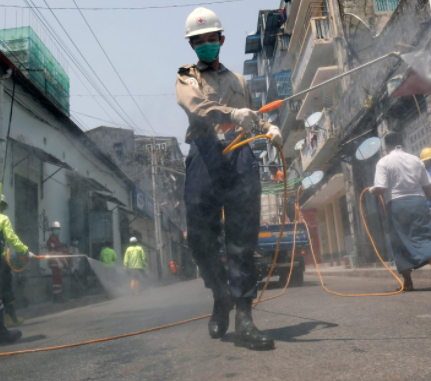The cleanliness of your home and its protection. This information is gathered by cleaning services Minneapolis.
 Cleaning and disinfecting public spaces, such as your office, school, home, and company needs you to:
Cleaning and disinfecting public spaces, such as your office, school, home, and company needs you to: Build your strategy
Enforce the strategy
Maintaining and updating the strategy
The reduction of the risk of COVID-19 contamination by cleaning and disinfection is an essential component of the reopening of public spaces that will take careful preparation. Each American has been called upon to slow the spread of the virus by social distancing and hygiene prevention, such as washing your hands regularly and wearing face covers. Everyone also plays a part in ensuring that our cities reopen and stay open as safely as possible.
When you use the right materials, the virus that triggers COVID-19 can be destroyed. The EPA has compiled a list of disinfectant products, including ready-to-use sprays, concentrates, and wipes, that can be used against COVID-19. It has been shown that each product is successful against viruses that are more difficult to destroy than viruses like the one that causes COVID-19.
A few significant Coronavirus reminders and Risk Mitigation of Exposure:
Coronaviruses die naturally within hours to days on surfaces and objects. The period the virus lives on surfaces and artifacts will be decreased by warmer temperatures and sunlight exposure.
Standard routine washing extracts germs and dirt from surfaces with soap and water. It decreases the likelihood that infection with COVID-19 will spread.
On surfaces, disinfectants remove germs. You will further lower the risk of transmitting infection by destroying germs on the surface after washing. An significant part of minimizing the risk of COVID-19 exposure is EPA-approved disinfectants. Alternative disinfectants (for example, 1/3 cup of bleach added to 1 gallon of water, or 70% of alcohol solutions) can be used if disinfectants on this list are in short supply.
• Store and use disinfectants according to the label in a responsible and acceptable manner. Do not mix bleach or other items for cleaning and disinfection together—this can lead to breathing in chemicals that can be quite harmful. Keep all disinfectants out of children's reach.
Do not over-use disinfectants or other materials or stockpile them. In crucial circumstances, this may result in shortages of suitable goods for others to use.
When you are washing and disinfecting, always wear gloves suitable for the chemicals used. Based on the environment and product, additional personal protective equipment (PPE) may be necessary. See the CDC's Cleaning and Disinfection for Community Facilities website for more information.
• Practice social distancing, wear face coverings, and adopt proper prevention hygiene, such as washing your hands regularly and using alcohol-based (at least 60 percent alcohol) hand sanitizer when soap and water are not available.









